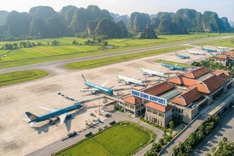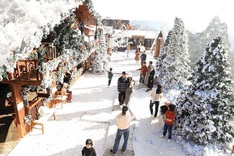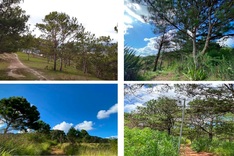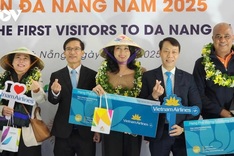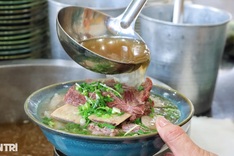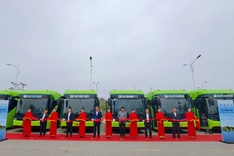Set in a green valley, Ban Lien Commune is lined with traditional Tay stilt houses beside terraced fields and misty Shan Tuyet tea hills. Travellers come here to escape the city’s pace and join village routines such as tea picking, rice planting, stream-fishing or cooking over a wood fire.
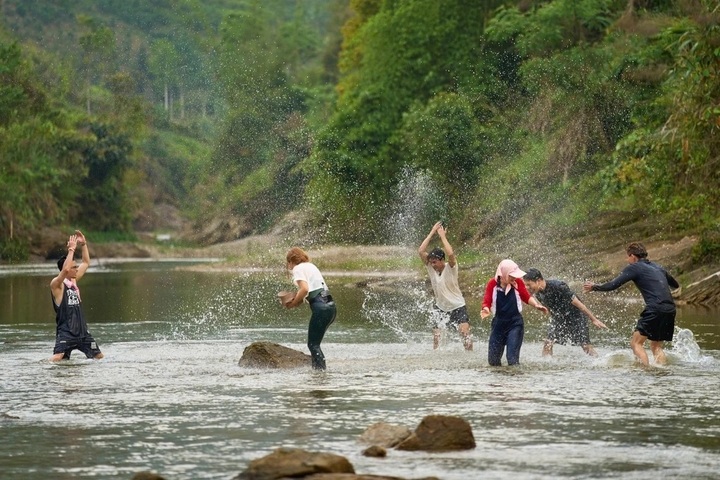
Tourists in Ban Lien Commune (Photo by G.Da)
Vang A Binh, owner of Binh Ban Lien Homestay, said visitors come not just to relax but to become real farmers for a day, with tea picking, stream fishing, wood-fired cooking and basket weaving the biggest draw.
Local homestay owners, all residents of the area, together run a cooperative, keeping their stilt houses traditional, serving local food and guiding guests through farm work. The One Day as a Farmer product lets visitors slow down and reconnect with the land and people of the northwest,” Binh said.
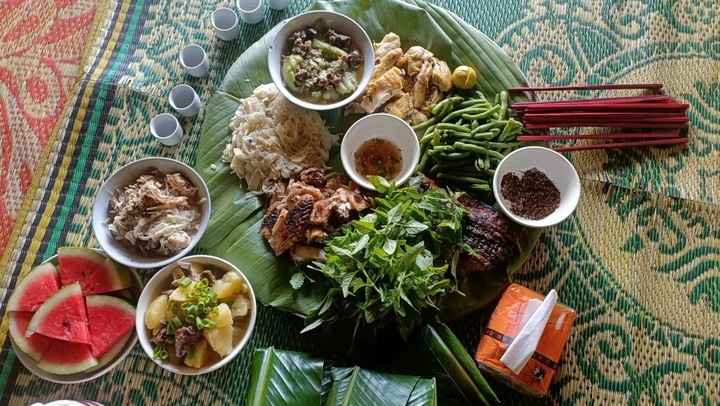
A meal in Ban Lien Commune (Photo by Vang A Binh)
Rooms cost around VND 150,000 (USD 6) per person per night, with meals priced the same. Local guides for tea picking, trekking or farm activities cost VND 500,000 (USD 20) per group per day, regardless of size.
Once a quiet Tay farming village, Ban Lien has transformed since residents began working together on tourism in 2019. Locals now maintain their rural way of life while creating new incomes from traditional agriculture.
Beyond relaxing, visitors join the rhythm of farm life, ploughing, harvesting maize, picking Shan Tuyet tea, weaving or cooking signature dishes like grilled hill chicken, forest greens and roasted stream fish.
Lao Cai emerges as a rural tourism bright spot
According to the Lao Cai Tourism Department, rural and community tourism has grown strongly in Sa Pa, Bac Ha, Bat Xat and former Bao Yen District. Lao Cai now has hundreds of homestays, many ASEAN-certified, and is expanding farming-based community models among Tay, Hmong and Dao groups.

Local residents and visitors join outdoor activities (Photo by Vang A Binh)
These initiatives boost incomes through lodging, guiding and cultural performances while preserving traditions in line with green rural development. Lao Cai is also promoting clean farm produce, brocade and handicrafts.
From small models like Ban Lien, Vietnam is shaping a diverse rural tourism landscape where any field or village can become a destination. The One Day as a Farmer product gives visitors not only an experience but a closer link to Vietnam’s agricultural heritage.
From 2025-2030, the province aims for six ASEAN-standard community tourism models and 11 meeting Vietnam’s standards, and will expand eco- and adventure tourism at sites such as Ngu Chi Son and Rong and Ong waterfalls.
Such efforts not only create stable livelihoods but also protect natural resources and foster cultural values, key foundations for sustainable rural tourism.
As highlighted in government policy under Decision 922/QD-TTg, rural tourism development is a strategic tool to improve living standards and create distinct local tourism products.
From the hands of highland farmers, rural tourism is gaining new vitality, moving towards greener, more sustainable and internationally integrated development.

